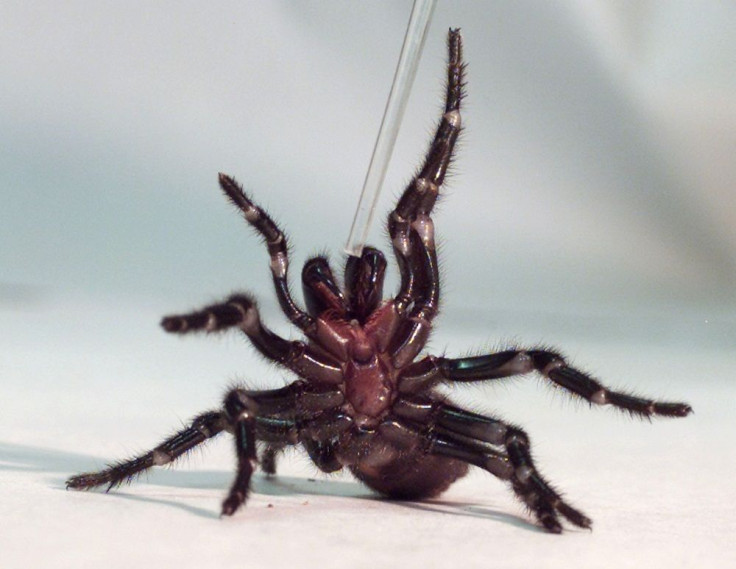Aussie researcher discovers mutant funnel web spider with red fangs near Canberra

[A Sept 4 version of this story erroneously identified spiders as insects. The correct classification is arachnids, a kind of anthropod similar to insects. This story was corrected accordingly a 11:23 a.m. PST on Nov 20, 2015.]
Australian National University, or ANU, researcher Mark Wong showed he was worthy of the National Geographic Young Explorer grant for his discovery of a mutant web spider with red fangs. He found the insect at the Tallaganda National Park near Canberra.
Mashable reports that Wong was doing research work on the characteristics of the spider’s funnel-shaped webs on the park’s forest floor when he discovered it. He lifted a fallen wood and probed the ground with a stick.
The spider then emerged, running out of the lair with legs raised and fangs with venom ready to bite Wong. The researcher immediately noticed the spider’s colour, which he knew it was a special arachnid because funnel web spiders normally have black or brown coats, while that particular spider has bright red patches on its fangs and head.
Even David Rowell, Wong’s supervisor and a professor of evolutionary genetics at ANU, says the some species have a lot of variations, but this is the first time in 35 years of research that he saw a funnel web spider with such colours.
Rowell explains, “Funnel webs after they’ve moulted can be a pale green, then darken up. Or when the females are full of eggs, their abdomens can look purple.” However, Wong notes that other funnel web spider species have the genes to produce red pigment which explains its having red on some parts of the insect’s body. His theory is that for the particular spider, its melanin genes was not expressed which resulted in the red pigmentation underneath its body.
According to Live Science, there are two known Hexathelidae spiders in Australia – the Sydney funnel spider and northern tree funnel spider. The Commonwealth Scientific and Industrial Research Organisation lists the two as some of the most dangerous spiders in the world.
Thanks to the discovery of an anti-venom in the 1980s, no one has died of bites from the two types of spider.
Contact the writer at feedback@ibtimes.com.au or tell us what you think below




















